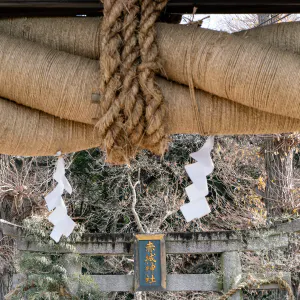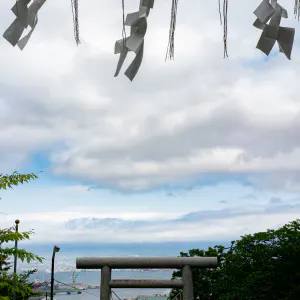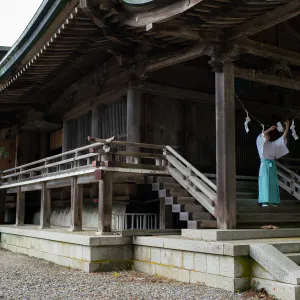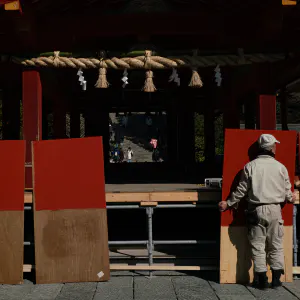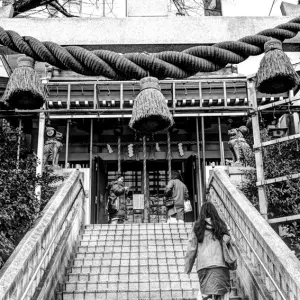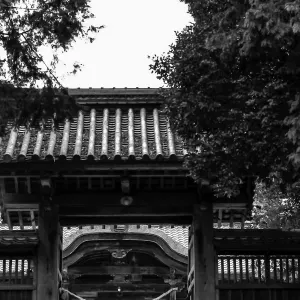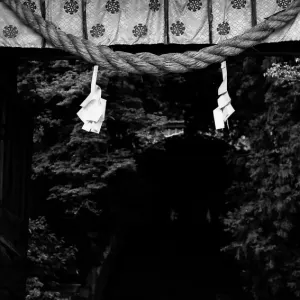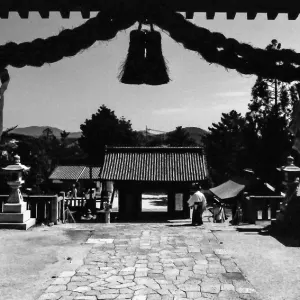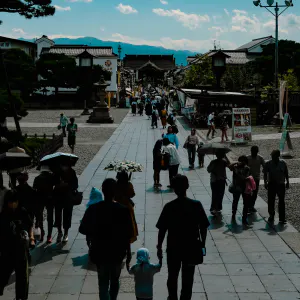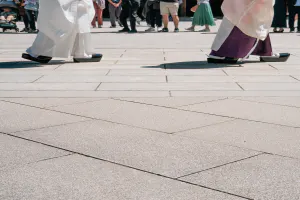A sacred rope was hung to connect two trees in the precincts of the unpaved Daita Hachiman Shrine

As was the case at Togo Jinja Shrine in Harajuku, the shrine pavilions are often surrounded by cobble gravel. Thinking that there must be a reason for going to the trouble of using cobble gravel when asphalt pavement is easier to maintain, I searched and found many articles on the subject. However, all of them only stated vague reasons, but no clear reason.
Some say that it is to keep the site clean, or that the gravel is placed on the site to purify worshippers walking on it instead of a river, or some other plausible reason. While all of the reasons sounded true to my ears and seemed false, the only clear thing was that no one knew the correct answer. The reason for all the reasons given is that no one really knows the answer.
Among the many reasons, there is even a theory that the crunchy sound made when walking on a gravel path keeps away any illicit feelings that are out of the ordinary. The sound of stepping on the gravel is a charm to ward off evil spirits on the shrine grounds. If this is true, I wonder what would happen if the shrine were surrounded by soil instead of gravel, as is the case at Daita Hachiman Shrine in the photo.
| Apr 2022 IN THE CITY TOKYO | |
| DAITA PRECINCT SHIMENAWA SHRINE |
PHOTO DATA
No
12224
Shooting Date
Feb 2022
Posted On
April 3, 2022
Modified On
August 15, 2023
Place
Daizawa, Tokyo
Genre
Street Photography
Camera
SONY ALPHA 7R II
Lens
ZEISS LOXIA 2/35


